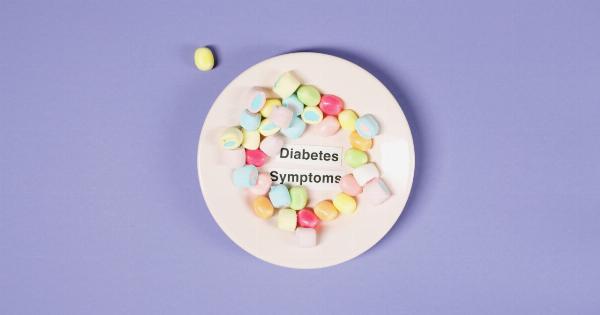Nonalcoholic fatty liver disease (NAFLD) is the most common liver disorder in the Western world, affecting approximately 25% of the population.
It is characterized by the buildup of excess fat in the liver, and it is strongly associated with obesity, diabetes, and metabolic syndrome. NAFLD is typically asymptomatic, but it can lead to serious liver damage over time, including nonalcoholic steatohepatitis (NASH), cirrhosis, and liver cancer.
In addition to liver complications, growing evidence suggests that NAFLD is also linked to an increased risk of cardiovascular disease (CVD) and its associated morbidities and mortalities. In this article, we will explore the relationship between NAFLD and heart health and discuss how this connection may inform treatment interventions moving forward.
What Causes NAFLD?
NAFLD is often referred to as the liver manifestation of metabolic syndrome. As such, the primary risk factors for NAFLD include:.
- Obesity: excessive accumulation of body fat, particularly in the abdominal region
- Dyslipidemia: an abnormality in the levels of lipids (cholesterol and triglycerides) in the blood
- Insulin resistance: a condition in which cells in the body become resistant to the effects of insulin, leading to high blood sugar levels
- Type 2 diabetes: a chronic disease characterized by insulin resistance and high blood sugar levels
These risk factors are closely interrelated, and they can exacerbate one another over time. For example, excess body fat can lead to insulin resistance, which in turn can cause the liver to produce more glucose (sugar) than it needs.
This excess glucose can then be converted to fat and stored in the liver, leading to the development of NAFLD.
How Does NAFLD Affect the Heart?
The relationship between NAFLD and heart health is complex and multifactorial.
On the one hand, a growing body of evidence suggests that NAFLD is an independent risk factor for CVD, and that it may contribute to the development of atherosclerosis (hardening of the arteries) and other CVD-related pathologies. This connection is thought to be driven by a number of factors:.
- Inflammation: NAFLD is associated with chronic low-grade inflammation in the liver, which can spill over into the bloodstream and promote systemic inflammation throughout the body. Chronic inflammation is a key driver of atherosclerosis and other CVD-related pathologies.
- Oxidative stress: NAFLD is also linked to increased oxidative stress, which is a condition in which there is an imbalance between the production of reactive oxygen species (ROS) and the body’s ability to detoxify them. Excessive ROS can damage cellular components and contribute to the development of atherosclerosis.
- Dyslipidemia: NAFLD is associated with changes in lipid metabolism that can lead to the accumulation of harmful lipids (such as LDL cholesterol) in the bloodstream. These lipids can then contribute to the development of atherosclerosis and other CVD-related pathologies.
- Endothelial dysfunction: NAFLD may also contribute to endothelial dysfunction, which is a condition in which the lining of the blood vessels becomes damaged or dysfunctional. Endothelial dysfunction is a key driver of atherosclerosis and other CVD-related pathologies.
On the other hand, the relationship between NAFLD and heart health is also confounded by the fact that many of the risk factors for NAFLD are also risk factors for CVD.
For example, obesity, insulin resistance, and dyslipidemia all increase the risk of both NAFLD and CVD, making it difficult to disentangle the individual contribution of NAFLD to CVD risk.
Diagnosis and Management of NAFLD
NAFLD is typically diagnosed on the basis of liver function tests, imaging studies (such as ultrasound or magnetic resonance imaging), and/or liver biopsy.
Treatment for NAFLD depends on the severity of the disease and the presence of other risk factors. For mild cases of NAFLD, lifestyle modifications (such as weight loss, exercise, and dietary changes) may be recommended to improve liver function and reduce the risk of CVD.
For more severe cases of NAFLD, pharmacological interventions (such as insulin-sensitizing agents or lipid-lowering medications) may be needed to improve liver function and reduce the risk of CVD.
Prevention and Management of CVD in Patients with NAFLD
Given the strong association between NAFLD and CVD, it is important for patients with NAFLD to be regularly screened for CVD risk factors and to receive appropriate management for these risk factors. This may include:.
- Screening for dyslipidemia and treating with lipid-lowering medications as needed
- Screening for hypertension and treating with antihypertensive medications as needed
- Screening for diabetes and treating with lifestyle modifications and/or medications as needed
- Encouraging regular exercise and other lifestyle modifications to reduce CVD risk
It is also important to note that some medications commonly used to treat CVD may have adverse effects on the liver, particularly in patients with preexisting liver disease.
As such, careful consideration and monitoring is needed when prescribing these medications to patients with NAFLD.
The Role of Lifestyle Modifications in the Prevention and Management of NAFLD and CVD
Given the strong link between lifestyle factors and the development of NAFLD and CVD, lifestyle modifications are a key component of both prevention and management for these conditions.
Specific lifestyle modifications that may be helpful in the prevention and management of NAFLD and CVD include:.
- Weight loss: even modest weight loss (<5% of body weight) has been shown to improve liver function and reduce CVD risk in patients with NAFLD
- Regular exercise: regular exercise is associated with improved liver function and reduced CVD risk in patients with NAFLD
- Healthy dietary choices: dietary modifications such as reducing intake of processed and high-fat foods, increasing intake of fruits and vegetables, and limiting alcohol consumption can all help to improve liver function and reduce CVD risk in patients with NAFLD
Conclusion
NAFLD is a common liver disorder that is closely linked with obesity, diabetes, and metabolic syndrome. Growing evidence suggests that NAFLD is also an independent risk factor for CVD and its associated morbidities and mortalities.
As such, it is important for patients with NAFLD to receive regular screening and appropriate management for CVD risk factors, as well as lifestyle modifications to reduce the risk of both NAFLD and CVD. Moving forward, further research is needed to elucidate the mechanisms linking NAFLD and CVD, as well as the most effective interventions for preventing and managing these conditions.





























